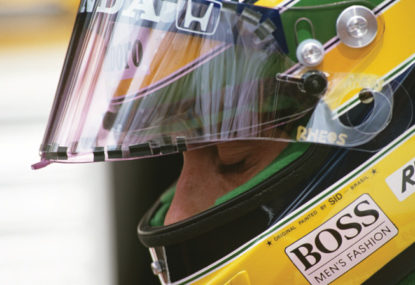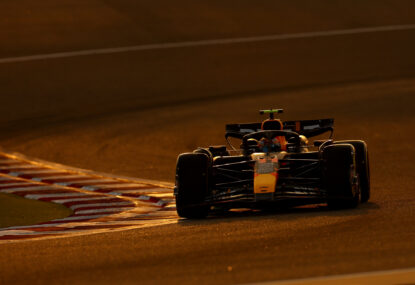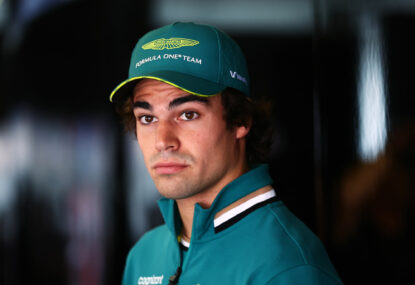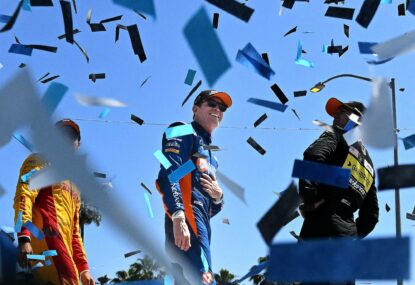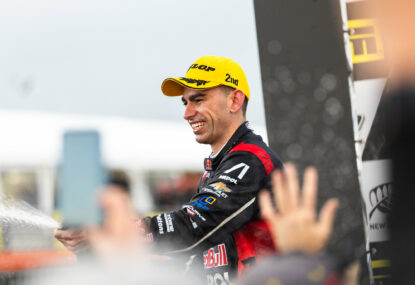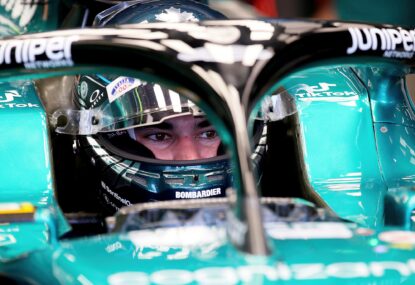It is no secret that the key to the success of a sport as entertainment is its ability to connect to its audience on a human level, and for their decreasing visibility in the cockpit, it are the drivers who draw in Formula One crowds.
This is not to say that technology and innovation or the thousands of people employed by the Formula One industry to create these spectacular machines do not have a place at the heart of the formula, but flags bearing the name ‘Mercedes PU106B Hybrid’ are few and far between.
With this in mind it’s easy to understand why team principals – or perhaps, more pertinently, principals of teams struggling for performance – agonise over the idea that their star drivers are unable to deliver on their potential under regulations that emphasise engine and chassis performance.
“Driving a modern Formula One car,” goes the increasingly repeated catch cry of the agitators for change, “is too easy”.
Cue: reminiscing of some golden era gone by, of a time when drivers would ease their exhausted bodies from the cars, dripping in sweat, having expended every last drop of energy. Images of Ayrton Senna winning at Brazil in 1991 have been conjured frequently, as have, uh… all those other times drivers have had muscle spasms while driving the cars.
Somehow today’s drivers don’t stack up to these mighty images. Lewis Hamilton’s increasingly outlandish hairstyles seem hardly perturbed by 90 minutes in the car, for example.
So have Formula One drivers lost that hero quality? Is this sport, billed as the pinnacle of motor racing, no longer the challenge it used to be?
The rap sheet doesn’t look good on first glance. Team bigwigs, a string of past and present drivers, and even Pirelli, the sport’s tyre supplier, have all decried the drivers’ lack of sporting spectacle. The Formula One cause is also hindered by the fact it has a teenager, not yet old enough to drive a road car unsupervised, in its midst – talented though Max Verstappen evidently is.
What’s worse is that drivers from WEC land are proclaiming how much greener their grass is. Formula One could be great too, if only it would wake up to “real driving”, whatever that is.
The sport’s attempts to scrub up its drivers to appear more heroic have been hit and miss. A ban on driver ‘coaching’ via team radio is regulated inconsistently, largely because no-one is really sure what should be considered as aiding the driver over merely keeping him informed. In any case, pit-to-car communication continues unfettered in sportscar racing, allowing fans greater insight into the sport without compromising image.
The perpetual call, which is borne of little thought, is for cars that are “harder to drive”. This is to be achieved, say the preachers, by making the cars faster by piling on the downforce.
One must assume that it is beside the point that this generation of cars, introduced last season, had downforce stripped away from them to make them more difficult to drive in combination with masses of torque from the new engines.
Controlling fishtailing cars and traction events were supposed to revitalise the sport – but now a formula for point and squirt racing in which the driver need merely put his foot down is the answer? It doesn’t tally.
The critical difference exists in what we consider to be fundamental to great drivers, and 2015 is exhibiting a divide between two points of view: that a great driver is one who endures physical stress, and the best drivers are those who exhibit deft car control.
For consideration of this question, I defer to former driver turned Sky Formula One pundit Martin Brundle.
“It’s wrong to say that the 2015 cars are too easy to drive,” he said after completing a demo run in Force India’s 2015 car. “They are different.
“There is a surplus of power and torque over grip. You have to creep up to the limit, and that means you have to leave grip and speed on the table.
“You have to work out how much power and grip there is, you can’t just floor it and let the torque do its job – and I think that is harder to do.”
There’s no doubt every driver wants to be able to put his foot down and go as fast as possible, and equally that this sort of driving is physically strenuous – but does it make drivers heroes?
Rather than tearing itself down by lamenting the loss of feats of physical endurance, Formula One should be praising itself for being the home of driving nous.
Those detractors argue that Formula One should be a step beyond other categories, and on this there is no dispute – Formula One today requires a special sort of driver, and surely this meets the definition of ‘hero’ as closely as any sportsperson can hope to achieve.





























































































